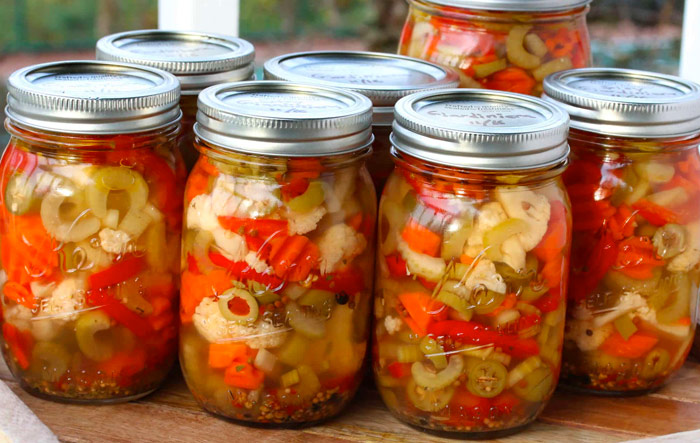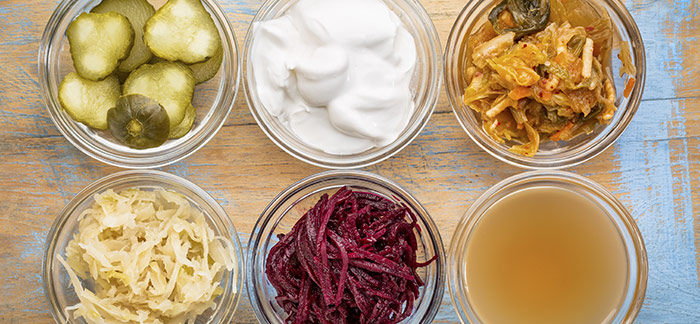|
Fermented foods seem to be a fast-growing fad worldwide. This health trend promises a host of benefits including helping digestion, liver detoxification, reduced cravings and weight loss.
You have probably been eating fermented foods your entire life without even realising it. Foods such as wine, tea, cheese, bread and even chocolate are made using the fermentation process. This process uses the fermentation of yeast and some bacteria to enhance ethanol production although the quality is usually quite low. Fermented foods come in many different forms.
|
|
The brain gut connection
|
|
As we aim to be healthier in every way scientists are discovering that your gastrointestinal system has a major impact on how your brain functions, affecting your thinking, emotions and even your immune system.
Your gut otherwise known as your gastrointestinal tract consists of your mouth, this is the first part of the gut. When we eat food, the food passes down your gullet (oesophagus) then into your stomach and then into your small intestine. Your small intestine is made up of 3 sections – the duodenum, jejunum and the ileum. Your gut is the control centre of your body and it is very important to look after it in order to have a healthy nervous system.
Your gut has its own nervous system and sends information via your vagus nerve to the brain, because of this connection those prone to stress and anxiety can often benefit by improving their diets.
Some scientists believe that this breakdown in communication between the gut and the brain may be responsible for many medical problems including allergies, asthma and obesity.
The best way to keep your gut healthy is by adding good bacteria. An easy way to do this is by including fermented foods in your diet. Our high processed fast food diets and sugar substitutes stimulate a fungus called Candida; this fungus affects the gut's delicate ecosystem. When your digestive system is healthy and working correctly it will produce serotonin which keeps you happy, healthy and feeling good.
The new exciting health trend on everyone’s lips is Kombucha. (Kom-boo-cha)
Kombucha is a fermented tea that dates back to 220 BC as is sometimes referred to as the “tea of immortality”
This magical elixir, if brewed correctly is packed with billions of living probiotics, amino acids, polyphenols and active enzymes that have a vast range of health benefits including improving digestion, increasing energy and helping to promote a clear mind.
|
|
Make your own Kombucha at home
|
|
This fermented tea can be brewed at home by fermenting sweet tea within a culture of yeast and bacteria. A SCOBY or symbiotic culture of bacteria and yeast, sometimes referred to as a mother is used to ferment the sweet tea.
|
| Easy kombucha recipe |
|
Steps
- Boil 4 cups of purified water.
- Add hot water and tea bags to pot (or brewing vessel)
- Leave to seep for 7 to 15 minutes then remove tea bags
- Add in sugar and stir to dissolve
- Let cool till it is at body temperature
- Add the SCOBY and starter liquid
- Cover with a cloth and secure with a rubber band
- Place the container in a warm area out of direct sunlight – the new culture will form at the top
- After 7 days you can taste your Kombucha – if you find it too sweet allow the mixture to brew for a few more days. Keep tasting till you achieve the desired result.
- Remember to set aside your SCOBY and starter liquid for your next batch (remove at least 2 cups from the top of your current brew)
|
|
|
You can flavour your kombucha as desired or drink the mixture as is. Kombucha never goes bad and as long as there is no mould present is safe to enjoy.
|
|
Sauerkraut in a mason jar
|
 |
|
Another great fermented food alternative that you might have heard of is sauerkraut, this can be easily made in a mason jar and its delightfully sour flavour and crunchy taste will have you hooked instantly.
Simply shred some cabbage and add it to a mason jar with a bit of salt. The cabbage will release a liquid creating its own brining solution. Once the cabbage has been submerged in this liquid for several days or weeks the cabbage will slowly ferment and transform into the crunchy sour condiment sauerkraut. This process is called lacto-fermentation.
Lactobacillus is the same bacteria that can be found in yoghurt and other cultured products. When submerged in the brine solution this bacterium converts the sugars found in the cabbage into lactic acid and acts as a natural preservative that inhibits the growth of harmful bacteria and preserves the shelf-life of the sauerkraut.
|
|
Store the mixture correctly
|
|
Stored in the fridge, sauerkraut can be kept for months and added to most meals or sandwiches to provide that extra crunch.
It is important that the cabbage in the jar remains submerged so you should either stamp it down a few times a day or you can place a larger outer leaf of cabbage over the surface of the shredded cabbage to hold it down and prevent it from floating to the surface. The jar should remain covered at all times with a clean piece of cloth or cheese cloth. This will allow airflow but prevent dust and other contaminates from entering the jar.
After a day or two you may notice bubbles, foam or white scum collecting on the surface, this is a good sign of healthy fermentation. The white scum should be skimmed off before you refrigerate the mixture again.
Once you have become a fearless food fermenter you can experiment by creating different types of sauerkraut including:
- Garlic sauerkraut (add 2 – 4 cloves of chopped garlic to your mixture)
- Curry sauerkraut (add 1 TBSP curry powder)
- Carrot sauerkraut (add 2 grated carrots)
- Spicy sauerkraut (add 5 – 6 chopped hot peppers)
- Kale and carrot sauerkraut (add 2 grated carrots and ½ a cup of fresh chopped kale)
|
|
Pickled Vegetables
|
 |
Vegetables pick up the spice and sourness from pickling but stay crisp and retain their flavour.
|
|
Yield: makes 10 cups
Active time: 1 hour
Total Time: 1 day
|
|
Ingredients for the pickling liquid
2 ½ cups distilled white vinegar
3 cups water
¾ cup sugar
5 tablespoons kosher salt
1 teaspoon yellow mustard seeds
½ teaspoon dried hot red pepper flake
|
|
The vegetable
1 head cauliflower (trimmed and broken) about 6 cups
1 red bell pepper (cut into pieces)
1 yellow bell pepper (cut into pieces)
1 cup brine-cured green olives
½ cup oil-cured black olives
|
|
Make the pickling liquid
- Bring the pickling liquid ingratiates to a boil over a moderate heat
- Stir until the sugar has dissolved
- Transfer to a bowl and cool for 30 minutes
- Cook your vegetables
- Drain vegetables and leave to dry
- Add vegetables and olives to the pre-prepared pickling liquid
- Weigh down the vegetables with a plate to keep them submerged
- Chill and keep covered for at least 1 day
|
|
|
Eating fermented foods is a great way to include probiotics and “good bacteria” into your diet. When you have the correct balance of gut bacteria and digestive enzymes you will be able to absorb more nutrients from the other foods that you eat. Save money by using fermented foods as a budget friendly way of adding vitamins to your diet. On a side note just one serving of sauerkraut contains more probiotics than an entire bottle of supplements so it’s a no brainer to start adding it to your diet as soon as possible.
|

